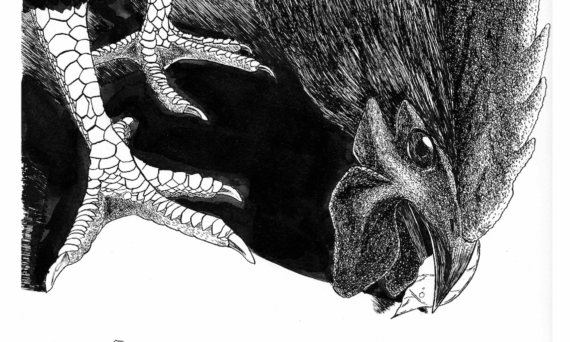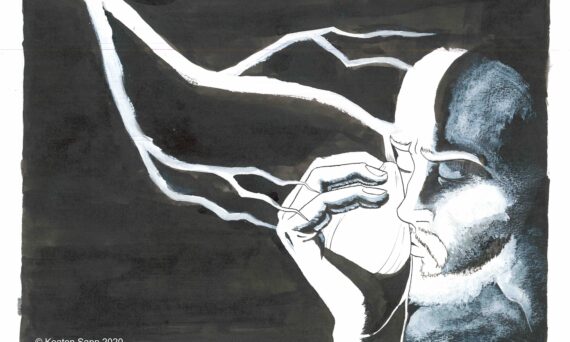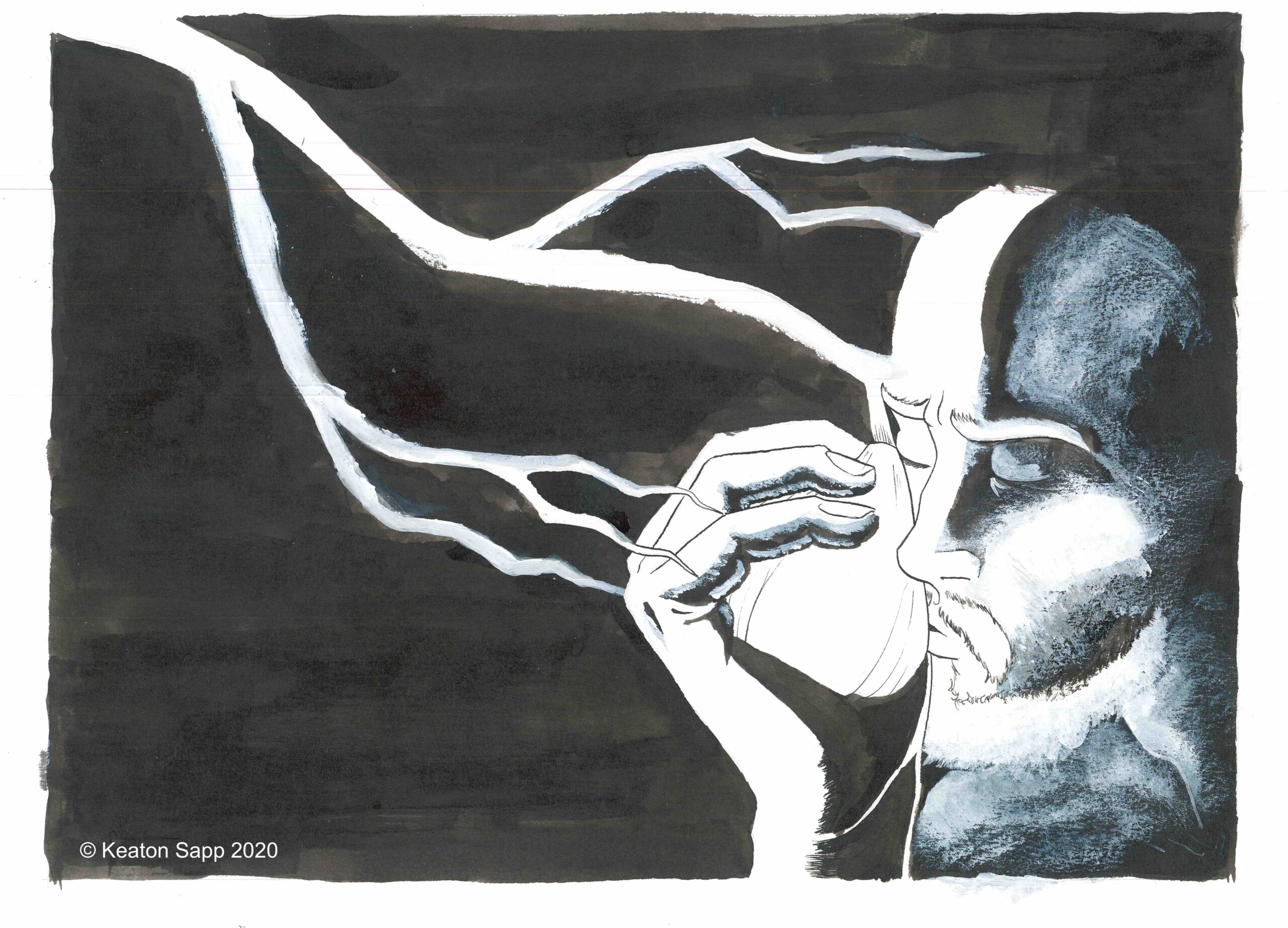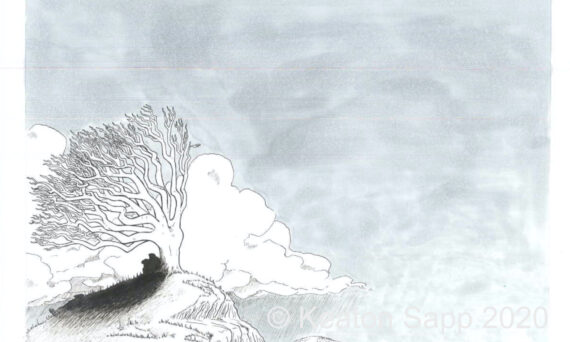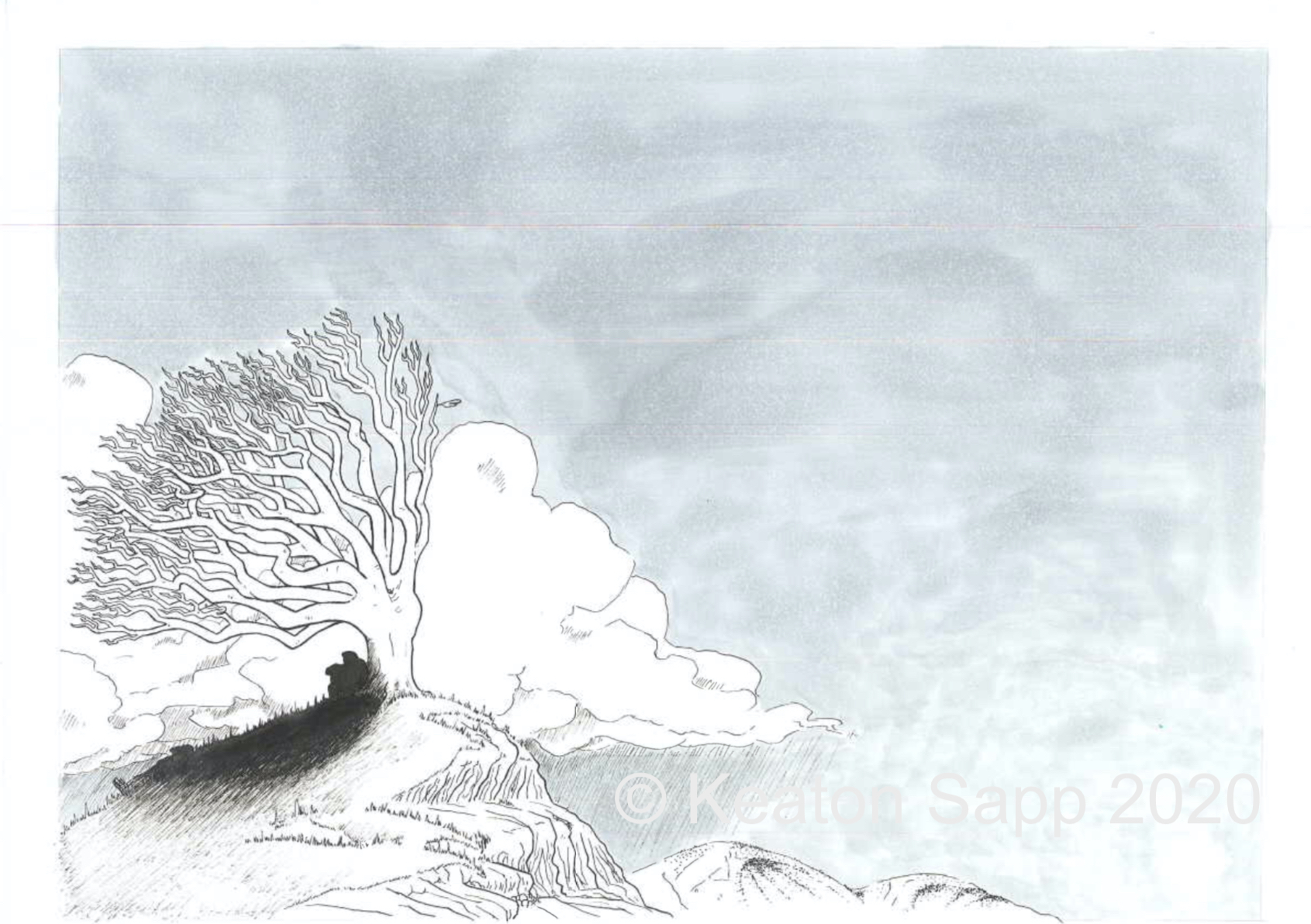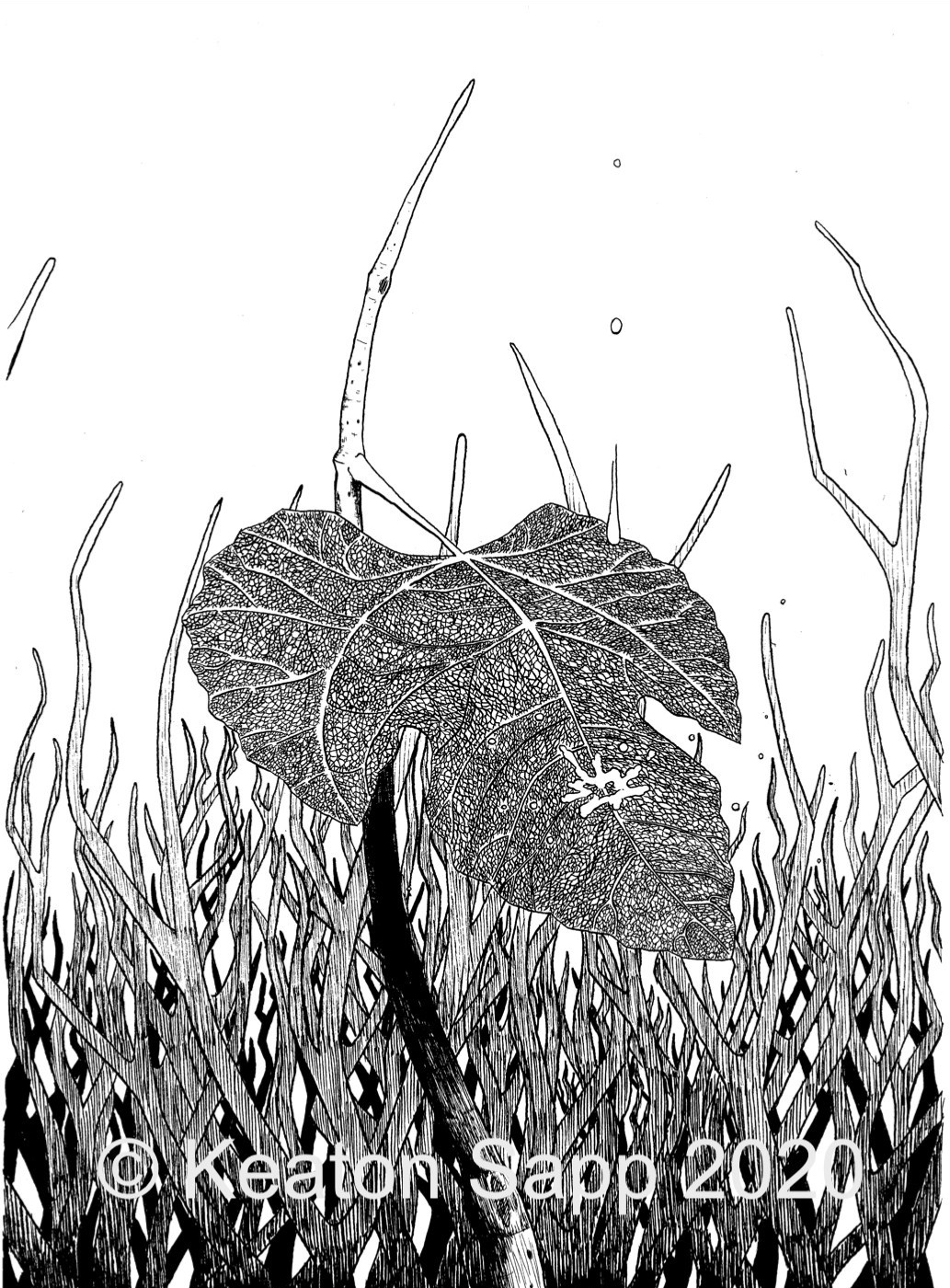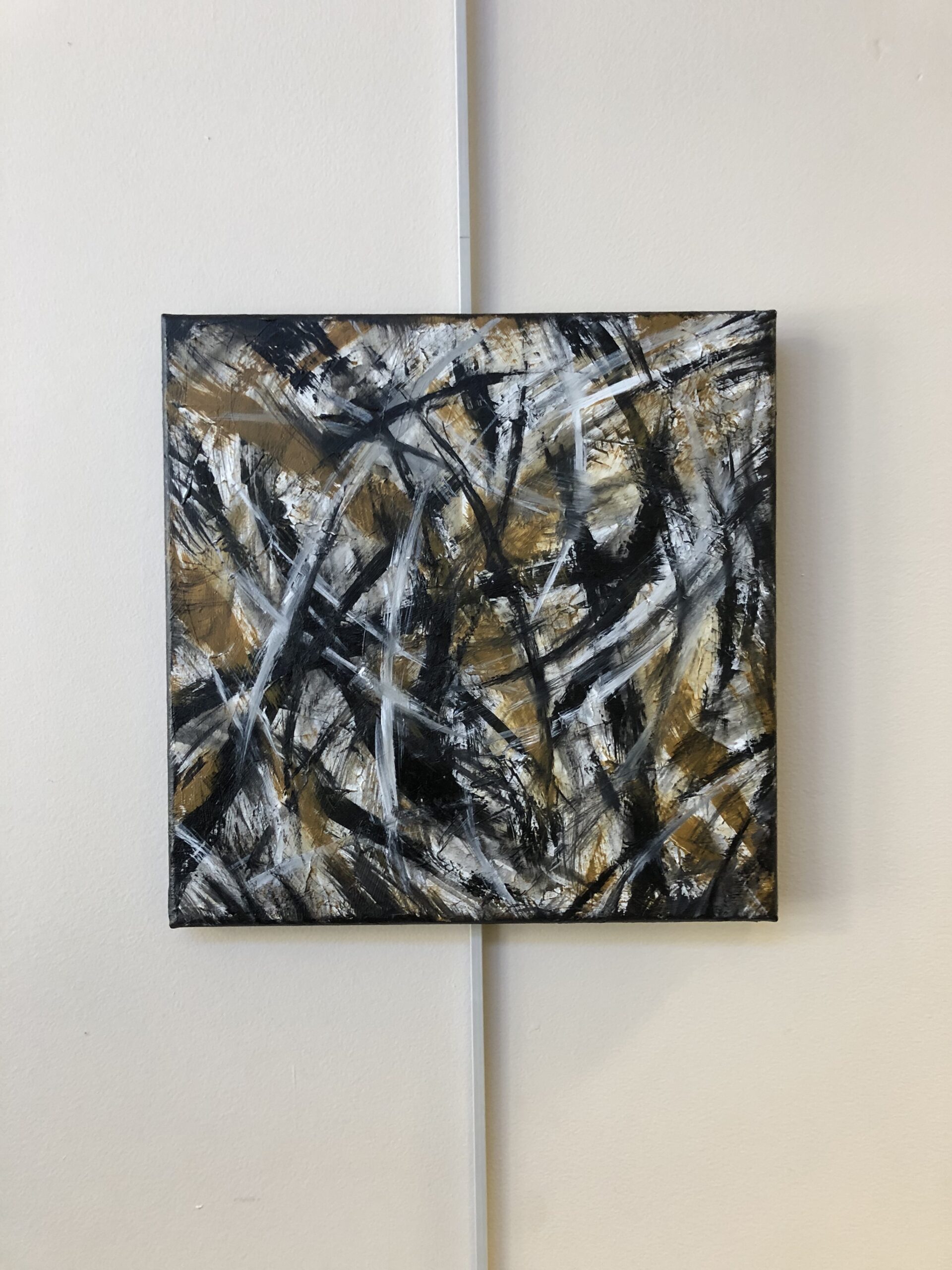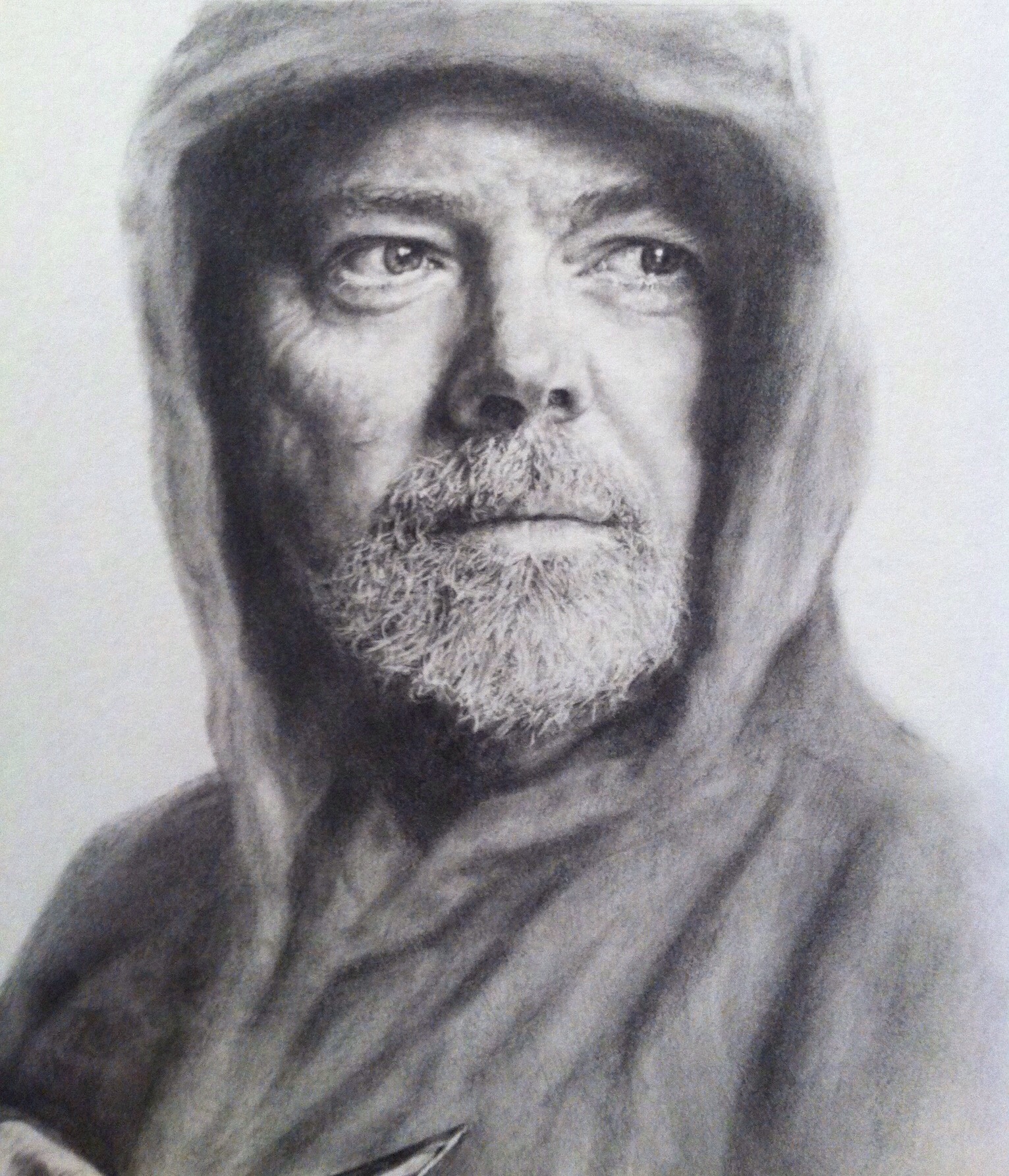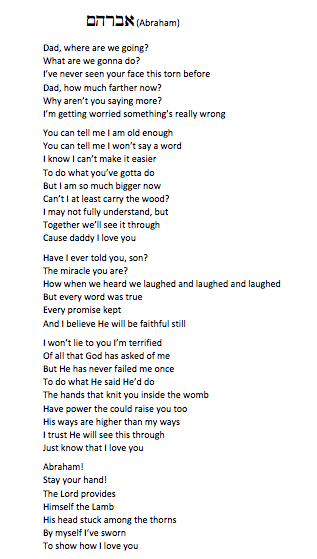The Denial
The Fourth Station in the Lenten art exhibit, The Stations of the Cross, is entitled, “The Denial.” This piece draws our attention to Peter’s denial of Jesus as foretold in Matthew 26:30-35 and fulfilled in Matthew 26:69-75. They read,
And when they had sung a hymn, they went out to the Mount of Olives. Then Jesus said to them, “You will all fall away because of me this night. For it is written, ‘I will strike the shepherd, and the sheep of the flock will be scattered.’ But after I am raised up, I will go before you to Galilee.” Peter answered him, “Though they all fall away because of you, I will never fall away.” Jesus said to him, “Truly, I tell you, this very night, before the rooster crows, you will deny me three times.” Peter said to him, “Even if I must die with you, I will not deny you!” And all the disciples said the same.
Later in chapter 26 we read,
Now Peter was sitting outside in the courtyard. And a servant girl came up to him and said, “You also were with Jesus the Galilean.” But he denied it before them all, saying, “I do not know what you mean.” And when he went out to the entrance, another servant girl saw him, and she said to the bystanders, “This man was with Jesus of Nazareth.” And again he denied it with an oath: “I do not know the man.” After a little while the bystanders came up and said to Peter, “Certainly you too are one of them, for your accent betrays you.” Then he began to invoke a curse on himself and to swear, “I do not know the man.” And immediately the
rooster crowed. And Peter remembered the saying of Jesus, “Before the rooster crows, you will deny me three times.” And he went out and wept bitterly.
Peter’s denial of Jesus is one of the most shocking and yet human of events recorded in history. All of Peter’s bravado and self-confidence come crashing down upon his head. A man’s world is undone by a rooster’s crow.
Both Luke and Mark have additional comments about the circumstance. Luke says that Jesus looked across the courtyard and caught Peter’s eye. What was in Jesus look? What did Peter see? In Mark’s gospel, an angel instructs Mary Magdalene to “tell the disciples and Peter that his is going into Galilee.” What might that specific instruction have meant to Peter? Though the denial is epic, the forgiveness is that much greater.
Artist, Keaton Sapp, continues making use of the symbol of the fig leaf as a way to symbolize the passion narrative. What do you see in his depiction? Is the leaf merely Jesus or could it be something els?


